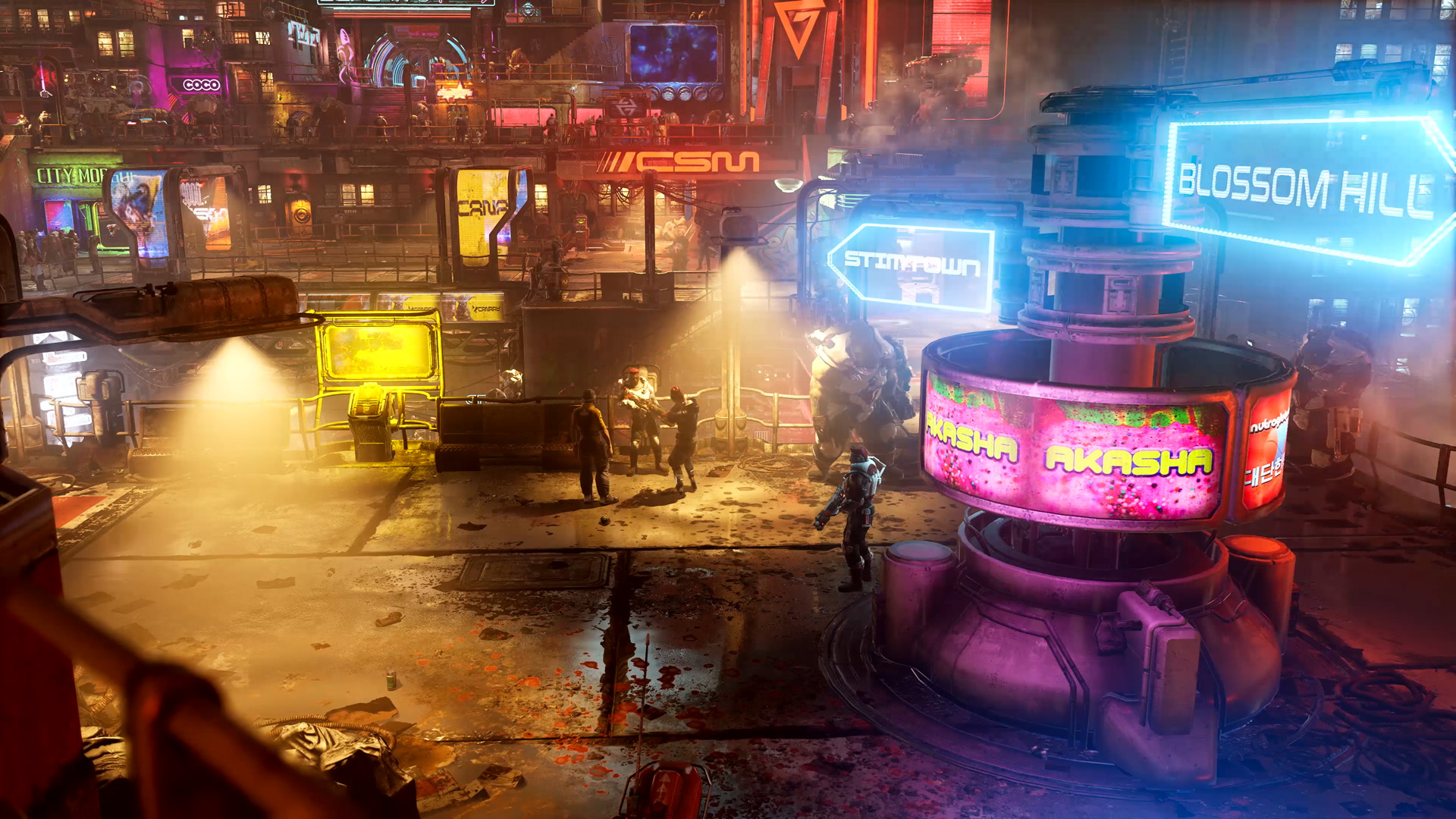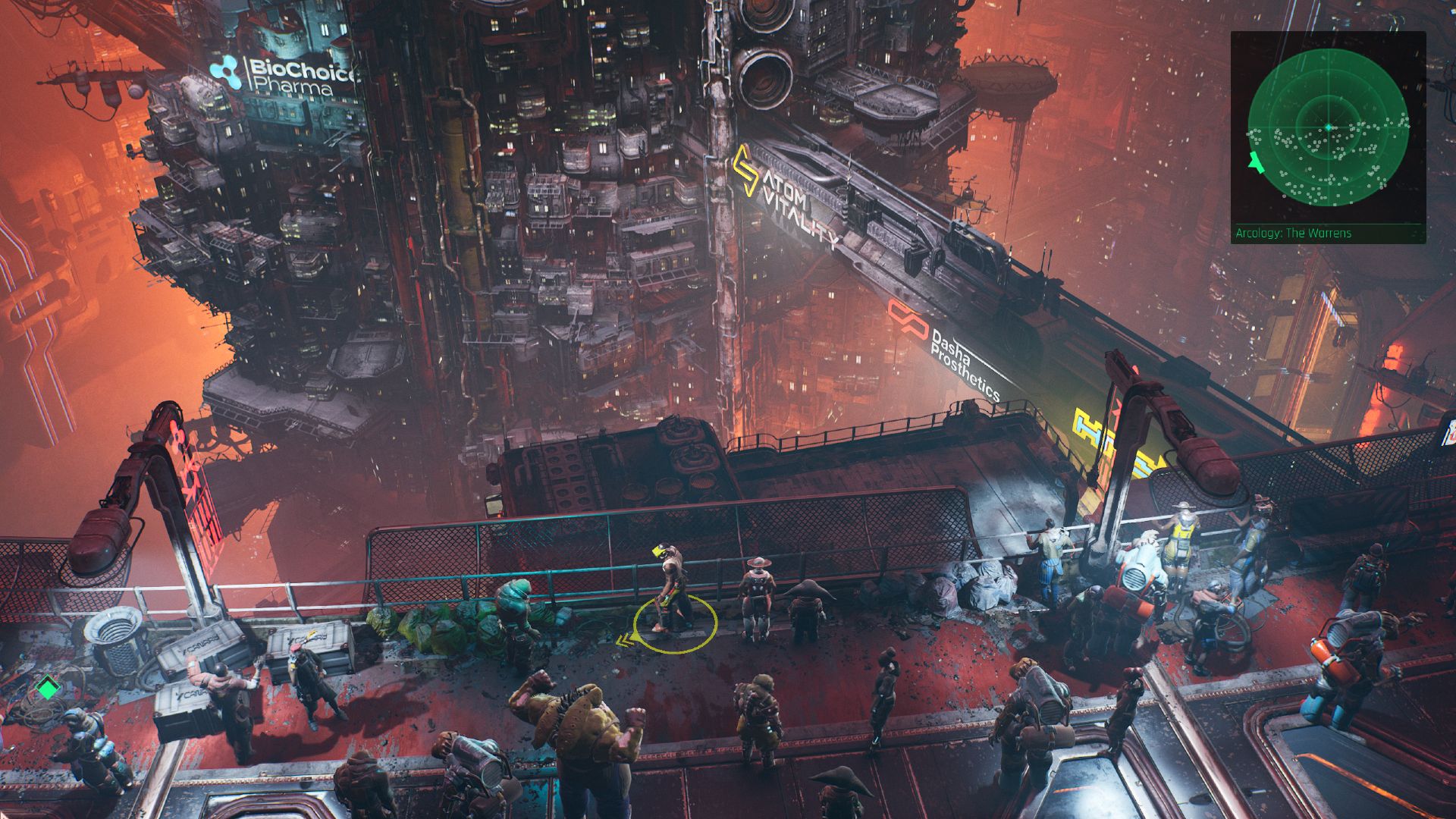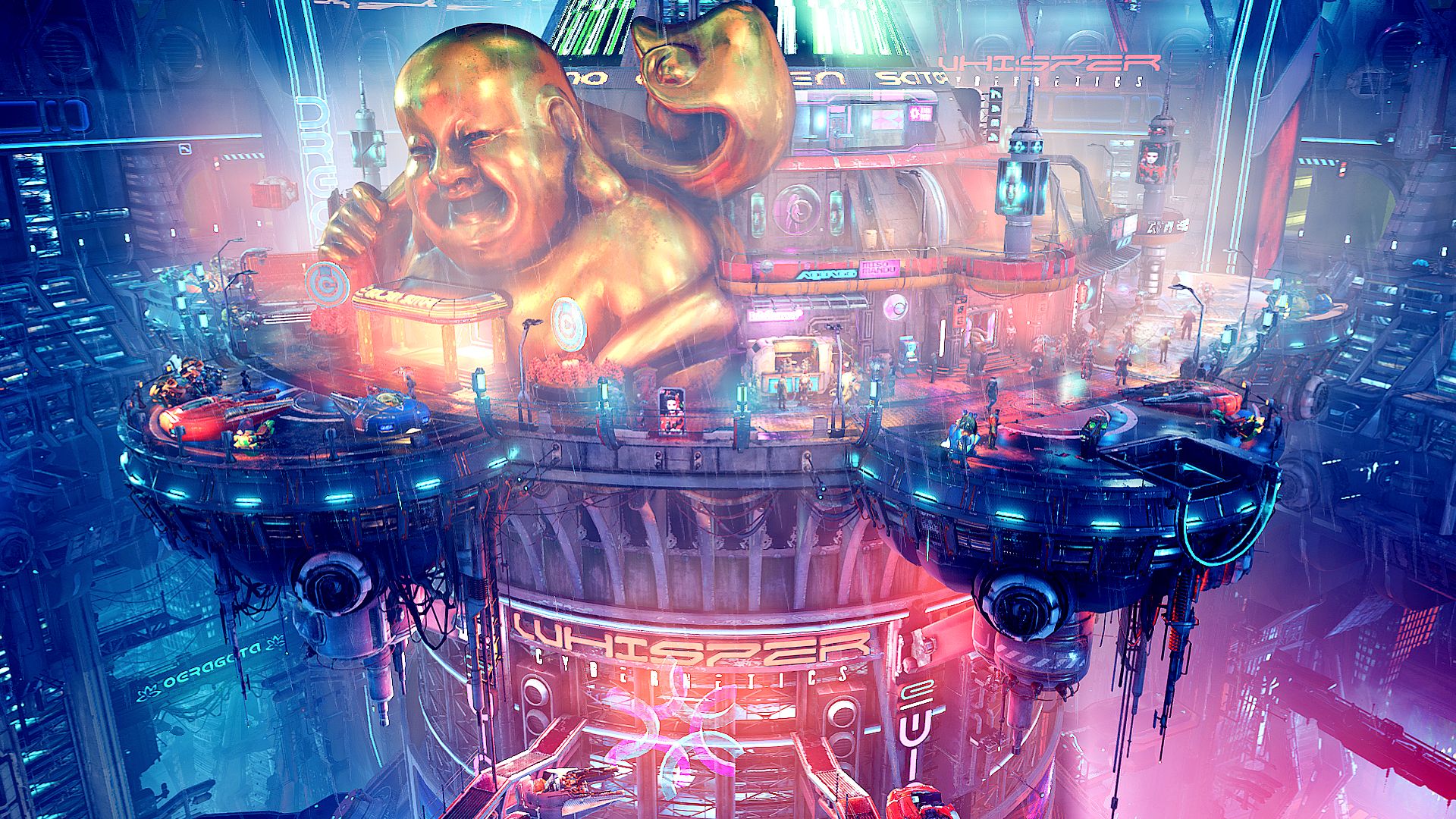The Ascent is one of those games that I knew I would want to play as soon as I saw it and then somehow ended up with two copies of, in the space of about a week. How? My forgetting it was part of the Humble Bundle for August and then buying it while it was on offer on Steam. Do I begrudge paying for it when I was due to have it again if I’d waited a week or two? Yes, but only for that reason. The game is, as far as I can tell so far, well worth the money I spent on it. Here’s why.
For starters, and for those of you who don’t already know, The Ascent is a futuristic cyberpunk role playing game – in which the roleplay elements are made up of character skills, stats and loadout – utilising an auto-adjusting isometric perspective and a twin-stick shooting style. For those of you that don’t know what this all means because it sounds like nonsense, let me summarise it for you. You play a superficially customisable character in a science fiction world that looks to tackle the implications of rampant capitalism, computerised body modification and the growing divide in the class structure, all while running around and shooting things, with controls for each, separately, and absolutely no control over the camera. I think that covers it all, but let’s delve into it all properly, in turn.
I have, since my first playthrough of Deus Ex (2000), been somewhat interested in both the cyberpunk concept and style, and this game definitely looks and feels cyberpunk-y in that society is ran by super-rich mega-corporations whose employees are actually indentured servants (referred to as “indents”) with little-to-no-chance of breaking out of the vast debt they have incurred merely by being employed by the corporation they ultimately work for. When you look at the game-world itself, there’s some very specific cyberpunk design choices that help to solidify that style description, most notably the vast amount of screens and media you can see in the hub areas, making it look and feel as though everything is ran by advertising, much like it is in the real world.

But if you can draw your eyes away from the bright lights and the pretty colours, you can see that in reality everything is run down, uncared for, with this being a symptom of society being under the control fo those corporations I mentioned. To make it comparable to the real world, consider Amazon, for a moment. If they ran the world right now (and who says they don’t?) they would be responsible for keeping on top of all the things that keep the world going, or else they wouldn’t have a world to run, right? At the moment, they need roads so they can deliver products and make money, so it stands to reason that they would make sure that in most places, the road infrastructure was well maintained… but there’s places they don’t get many deliveries to, so they’ll care less about those places and they’ll become more run down. Then there’s this push to drone deliveries which, if the wider vision becomes a reality means they probably won’t need roads, so it stands to reason they’d stop maintaining them quite so efficiently. We’d all suffer, but it won’t matter to them because it won’t really affect them.
That’s what happens in the game, these corporations are getting what they need and are actively present in the top layers of society – a literally multi-layered super-structure where the lowest members of society dwell in literal sewage and the rich see real daylight at the top of the pile. The top is beautiful, with natural green spaces, whilst the lowest region that I’ve visited in the game so far is called “The Deepstink” because of the smell. The disparity is obvious and the fact that everything gets more and more rundown the further down you go is indicative of society, both in game and real life. Real world capital cities are often the most cared for places, with typically the further you get from a major settlement being a shitter place to live than those closer to it. Not always, as in the UK Hull is the epicentre of shit, but generally that’s how it works.

I feel like this has gotten somewhat tangential to the point of the review here, so I’m going to bring it back to the game in question and say that I think it handles this particular style of thinking exceptionally. I was drawn into this world, into some of the smaller aspects of it, where a whole area has flooded and no-one really cares because it’s so close to the bottom that it just doesn’t matter. The game starts with a corporation just suddenly collapsing and everyone dealing with the fallout from that with some people concerned about how they’re meant to get on with life when all of a sudden the organisations that keep things running can just… stop being. There’s power-struggles, corporate speak, it’s all very formal and violent at the same time, with our character doing the physical stuff for a group that seeks to replace the one that collapsed, doing a lot for them in return for the promise that we’ll be relieved of our debt that keeps us on their leash in the first place. And that’s the thing, isn’t it? If someone will owe you for the rest of their lives, they will do all sorts of things they probably wouldn’t normally do, for the chance of never owing you – or anyone else – ever again. Whilst the sums might be smaller than you’d expect them to be for such underhanded behaviour, I think that’s why so many people chose the steal option on ITV’s gameshow Golden Balls, and why they would vote out the better contestants towards the end of The Weakest Link.
Visually, even when the game is trying to demonstrate that the place is rundown (Deepstink, especially), it’s clear that a lot of work has gone into making the place look shit – there’s junk everywhere, pipes leading in god only knows what directions, this whole sort of gloom feel to it and this tint that suggests that the air itself is dirty. Contrast that with the whites and brightness of the top floor and you just know that the class divide is real, and you’re slap bang in the middle of it.

The controls took a bit of getting used to if I’m honest and that might be because I’m not used to twin-stick shooting games or even, for that matter, using a console for shooting games. The idea of running one way but aiming another and it not being in first person just feels alien to me, but once I got the hang of it – and worked out how to shoot from cover – the game started going a lot better for me. I enjoyed the fact that, other than scripted battles, if you died it would let you continue from just before the fight, but keep the enemies you’ve killed, dead. No loss to experience either, which means that the boss fight I was stuck on for about an hour and a half was actually a grinding opportunity for me to catch up on some levels that I had fallen behind on.
The customising seems mostly pointless, to me. You get to decide your look – which is always pointless – your weapons, armour, and then the special additional powers you have. The weapons were mostly pointless, in that I ended up sticking with two machine guns throughout the entire game (from the aforementioned boss fight, this is), with one doing well against organic targets and the other doing well against machine targets. You don’t need much more than that, to be honest, with the rest only being that good for selling. Armour, much the same. I switched it up a bit before I beat finally beat that boss fight and haven’t really had to change it since. I am facing another battle I’m struggling with, but it’s less a single big boss to beat that I struggle with, and more a 2-minute hold out against a seemingly infinite wave of enemies that won’t stop unless I hold them off for 2-minutes, with the timer only counting down if I stay in a specific area, meaning that running the clock down while dodging attacks is a lot harder to do. Possible, but harder.

The special powers are where I think the customising matters most, to be honest. You get things like a super punch which one-hits most enemies, but takes a while to charge up, or you can spawn in some helper fighters, or my favourites at the moment, which are a bunch of spider bots that jump at enemies and explode, and something which marks some nearby enemies and then heals you when they take damage. Using the two together gives you an opportunity to restore your health to full, if you use them right. Very helpful when you’re running low and rolling from cover to cover doesn’t quite save you from being hit. When you throw in the ability to use grenades or deploy turrets, it becomes a much more tactical game and one well worth examining closer.
There was something else I was going to mention, but I forget what it is now so I’ll conclude instead. It’s a good game and if you’re into the sort of corporate-dystopia style then it’s definitely one you should try out. It’s not perfect – travelling from place a to place b on foot whilst trying to navigate a 3D world with what looks like a 2D map is never easy, even with the directional prompt which doesn’t always seem to kick in when it should. At the end of the day, it was both enjoyable and challenging, with there being absolutely no regret in my decision to start playing it. Isn’t that what matters?
8/10
-TG

